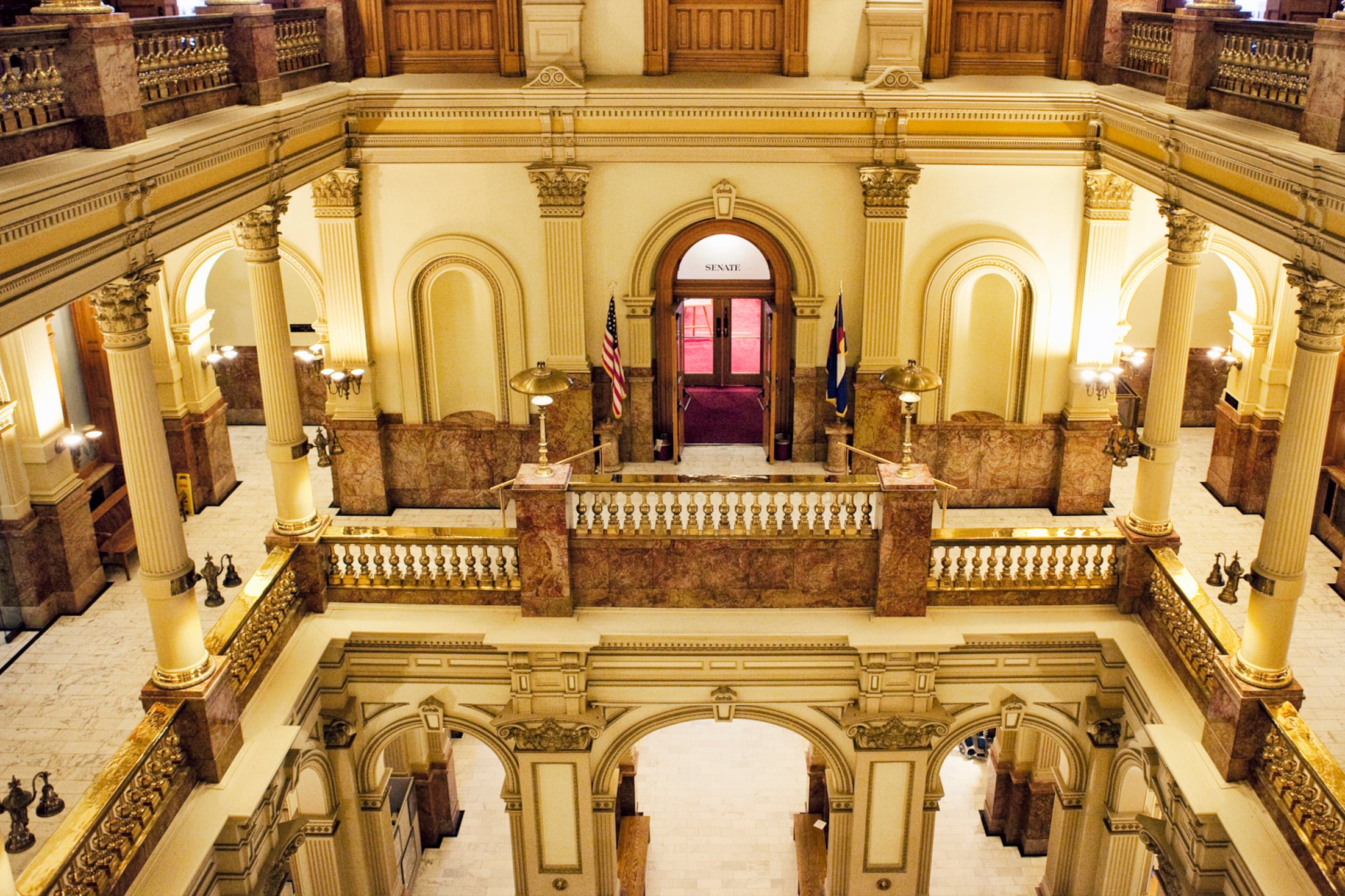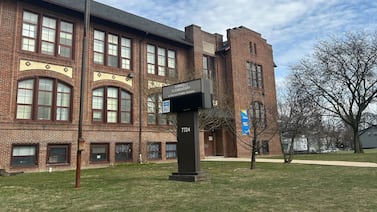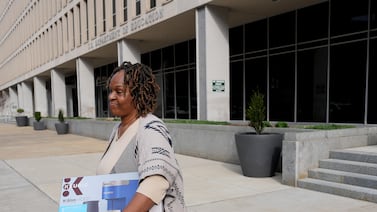Sign up for our free monthly newsletter Beyond High School to get the latest news about college and career paths for Colorado’s high school grads.
Next year’s $40.6 billion Colorado state budget proposal unveiled on Tuesday aims to provide a big boost to K-12 schools and colleges and universities across the state.
K-12 funding would increase nearly 7% to about $9.7 billion next year. Average per pupil spending would increase by about 7%, or $780, to $11,450 next year.
Higher education funding would get an even bigger increase, 10%. But the total amount of state money going to colleges and universities — about $1.6 billion next year under the proposal — is far less than the funding allocated to K-12 schools.
For the first time since 2009, the budget proposes to “fully fund” K-12 schools by eliminating a maneuver that withheld education funds to pay for other priorities. The end of what’s called the budget stabilization factor marks a turning point for the state and schools.
The budget proposal was crafted by the powerful six-member Joint Budget Committee, using recommendations issued by Gov. Jared Polis in November as a starting point. The budget committee once again prioritized education in a budget that also features increases to Medicaid reimbursements and more money for state workers.
The proposal’s introduction kicks off lengthy debate in the House and Senate over amendments to the budget. Budget committee members typically reject most of those amendments from fellow lawmakers before sending it back to them for final approval.
Joint Budget Committee members have faced challenges wrangling this year’s budget due to an unexpected $170 million shortfall, and last week held marathon sessions to pare down some priorities.
Although the budget writers made cuts and used one-time revenue to fill holes, they were able to preserve K-12 spending and provide far more for higher education funding than what was called for in Polis’ November budget proposal.
K-12 education gets full funding
Colorado lawmakers are required to continually adjust funding for schools based on the rate of inflation plus growth in the state’s student population. But for years the state has withheld money that should have gone to schools, through the budget stabilization factor — over $10 billion since 2009.
Lawmakers have said they do not want to keep pulling money away from schools. They hope to meet their obligation from now on. But even without withholding money from schools, the state’s education funding for next year would fund schools at 1989 levels, adjusted for inflation.
Still, many school funding advocates see this year’s proposal as a step in the right direction for the state, even as they push for more funding in future years.
The budget also provides enough money for the state’s Healthy School Meals for All Program, a new program that provides free school meals for all students but is facing a funding shortfall, because more kids than expected are taking part. The state would spend $56.1 million to ensure the state doesn’t have to cut back the program.
Lawmakers will cover $15.1 million of the program cost next year through general fund revenue. The rest will come from tax money dedicated to the program.
Colorado would also fully fund state-authorized charter schools at a level similar to other schools, bringing total spending to $49.2 million. Unlike district-authorized charter schools, state-authorized charter schools are not required to get a cut of locally raised tax money.
Along with the budget, committee members also will file a separate bill that will provide $24 million this year for newly arrived immigrant students. Colorado schools are grappling with an influx of newcomers, and the bill will call for providing more money for districts serving students who enrolled after the Oct. 1 funding cutoff.
Meanwhile, the separate school finance act, which outlines education spending and was filed on Friday, adds a new formula for funding rural schools. In previous years, lawmakers have used one-time allocations to direct more money to rural districts.
The school finance act and budget are the only two pieces of legislation lawmakers must pass before they adjourn in May.
Next year, a new permanent recurring factor would add $32.7 million next year to total education funding to be distributed based on student enrollment within a rural district, defined as a district with fewer than 6,500 students.
However, the school finance act doesn’t make bigger changes to the school finance formula. Advocates have called for lawmakers to overhaul the state’s school funding formula. Earlier this year, they received recommendations that call for almost half a billion dollars annually to be pumped into a formula overhaul.
The recommendations call for phasing in the formula changes, but it’s a large sum for the state next year and in subsequent years, especially when lawmakers have proposed dipping into reserves next year to pay for K-12 education increases. So far, no bill has been filed calling for changes to the state’s education funding formula.
The school finance act would also hold off on changing how the state calculates which students are considered “at risk,” meaning students living in poverty and facing other challenges outside of school. Districts receive more money to educate at-risk students.
The state was considering rolling out the new formula this fall to use socioeconomic factors, including eligibility for Medicaid, food stamps, and other government assistance, along with data from the U.S. Census about community poverty, to calculate how many of a district’s students are at risk.
Instead, the school finance bill would push using the new calculation into the 2025-26 budget year.
Lawmakers make big investment in colleges and universities
Joint Budget Committee members held off for weeks on making any decision on higher education budgets to see if they could increase funding well beyond Polis’ $48.2 million recommendation. The proposal nearly triples that amount.
Lawmakers plan to set aside $139.4 million more next year for college and university operations and student financial aid: $114.3 million more for operations, and $25.1 million for student financial aid.
The state would also spend $1.5 million in financial aid for youth experiencing homelessness.
Under the proposal, colleges and universities would be allowed to raise tuition by up to 3% for in-state undergraduate students. Institutions would be able to increase nonresident undergraduate student tuition by no more than 4%.
In a December letter, Colorado public college and university leaders said they would need $161.4 million more next year to meet inflation and wage increases. This is the third year colleges and universities have banded together to ask for more money beyond Polis’ budget proposal.
Even with the extra funding next year, concerns remain about the rising tuition burdens on students, especially because Colorado students pay more on average than students at peer universities in other states. And Colorado also spends less on average for higher education than other states.
Jason Gonzales is a reporter covering higher education and the Colorado legislature. Chalkbeat Colorado partners with Open Campus on higher education coverage. Contact Jason at jgonzales@chalkbeat.org.







